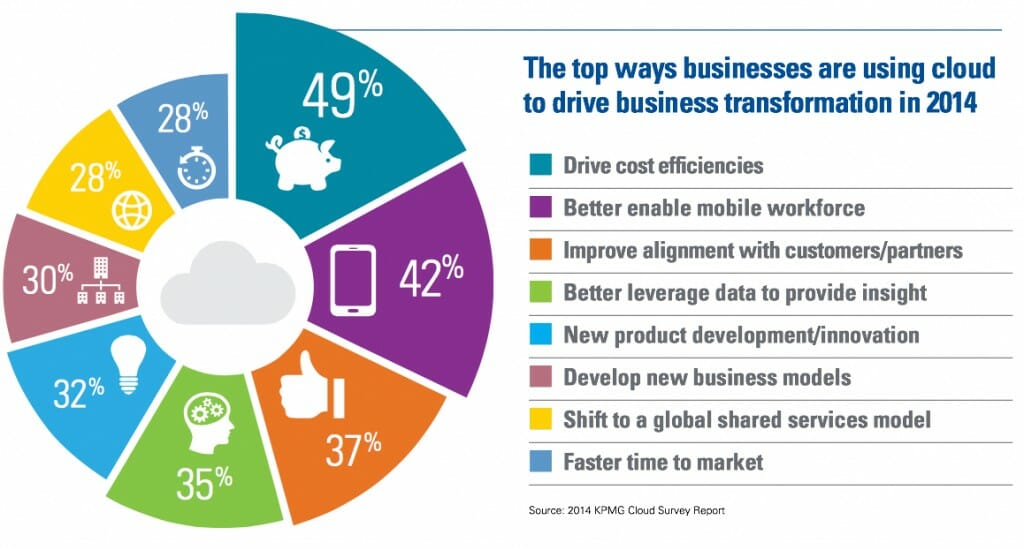Almost half of respondents in KPMG’s 2014 cloud computing survey are using cloud to drive cost efficiencies, with a similar number utilising it to better enable their mobile workforce.
The study, of 500 global C‑suite executives, saw a variety of ways in which businesses are using cloud to drive business transformation. Aside from cost savings (49%) and enabling a mobile workforce (42%), CXOs also see the benefit of cloud as improving alignment with customers and partners (37%), more effectively leveraging data to provide insight (35%), and aiding in new product development (32%).
The results show an interesting change when compared to KPMG’s last survey, The Cloud Takes Shape, in February 2013. Cost reduction was again the main driver for cloud transformation, yet speed to adoption, new market entry, business process transformation, and improved customer interaction were also cited.
Not surprisingly, security was seen as the key benchmark when seeking a cloud solution, cited by 82% of survey respondents. Price (78%) was only the third most important metric, behind data privacy (81%). The report argues the results are to be expected, describing data security as a “burning business issue across all areas of an organisation.”
Cloud isn’t just a cost saver, and any company changing their IT infrastructure for that reason alone is missing out
The report also examined the impact cloud has in terms of employee mobility and expectation. Cloud enables enterprise mobility and, through that, increases worker productivity (54%) and satisfaction (48%), as well as improve field service operations (45%) and gain a competitive advantage (44%).
The KPMG report concludes with five key takeaways for organisations looking to implement cloud solutions:
- Make cloud transformation a continuous process: Cloud should be seen across the whole organisation, not just a tech or IT project.
- Drive cloud transformation from the top: A lack of hierarchy could be costly to your implementation – instead, cloud projects should be managed centrally with a senior level team that guides strategic decisions.
- Focus on strong leadership and engagement: Companies should look at changing their corporate culture to align with a cloud shift, focusing first on getting buy-in from senior business leaders.
- Avoid silos: Similar to previous points, business and IT professionals should work side by side as cloud is brought into the enterprise, instead of creating potentially harmful shadow IT scenarios
- Measure success: Organisations should come up with “realistic” outcomes for their cloud transformation which, crucially, tie back to key business objectives.
Yet the most important conclusion the report draws is in terms of business mindset to moving to the cloud: cloud isn’t just a cost saver, and any company which goes into changing their IT infrastructure for that reason alone is missing out.
“Making such changes to an organisation are costly and time consuming, but such a large increase in responses signals the tremendous impact, beyond cost reduction, that cloud can have on an organisation,” the report argues.
“These results suggest that for many organisations, cloud has truly become a transformative solution.”
You can read the full report here.






